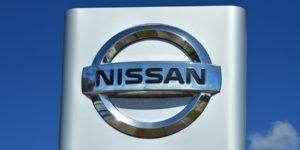J.D. Power found in a recent survey that auto insurance customer satisfaction with price has plummeted, driving a surge in policy shopping activity while dragging on the purchase experience index.
“A perfect storm of record-high replacement costs, increased frequency and severity of collisions, and an economic outlook that suggests this situation won’t change anytime soon is forcing a major industry disruption,” said Marty Ellingsworth, executive managing director of property/casualty insurance intelligence at J.D. Power, in a company press release.
The survey, J.D. Power 2022 U.S. Insurance Shopping Study, found that the average overall satisfaction score among auto insurance shoppers is 862 on a 1,000 point scale, down six points from a year ago. Six of nine large insurers and six of 11 midsize insurers see decreases in purchase experience satisfaction scores this year, according to the survey.
State Farm ranks highest among large auto insurers in providing a satisfying purchase experience, with a score of 885. The segment average is 863. The Hartford ranks highest among midsize auto insurers, with a score of 889. Erie Insurance (878) ranks second and Amica Mutual (874) ranks third. The segment average is 855.
The direct insurer channel reversed course after several straight years of steadily increasing customer satisfaction to fall 17 points this year as well, with the overall satisfaction score for the direct channel being 860. This puts it behind the exclusive agent channel (866) for the first time in five years. The independent agent channel climbed to 854 from 848 a year ago but still lags direct and exclusive agent channels in overall customer satisfaction, the survey found.
Shopping rates were down in early 2022 compared with 2021 as well, but recent rate increases in March and April of 2022 are pushing shopping rates back to historical norms, according to J.D. Power’s Auto Insurance Loyalty Indicator and Shopping Trends report. The report found that the largest drivers of new policy shopping for retained and switched shoppers are proactive price checking (51 percent) and rate increases (35 percent). Among those who are shopping for a new policy because of a rate hike, 64 percent experienced a price increase of 11 percent or more.
“Longer term, this may be the catalyst to significant adoption of usage-based insurance, which may be the only way insurers can navigate the financial realities while still managing to engage with customers and build loyalty by meeting their specific needs,” Ellingsworth added in the release.
Now in its 16th year, the U.S. Insurance Shopping Study is based on responses from 10,804 insurance customers who requested an auto insurance price quote from at least one competitive insurer in the previous nine months. The study was fielded from March 2021 through January 2022.
Source: J.D. Power





















 Florida Home Sales Decline Amid Hurricane Recovery, Surging HOA and Insurance Costs
Florida Home Sales Decline Amid Hurricane Recovery, Surging HOA and Insurance Costs  Commercial Lines Profit Growth: Execution Matters More Than Portfolio Mix
Commercial Lines Profit Growth: Execution Matters More Than Portfolio Mix  Quantifying Social Inflation: How Swiss Re Developed an Index
Quantifying Social Inflation: How Swiss Re Developed an Index  Generative AI: A Double Agent Serving Good and Evil in the World of Claims
Generative AI: A Double Agent Serving Good and Evil in the World of Claims 




